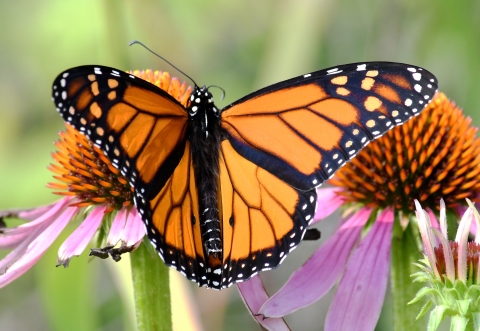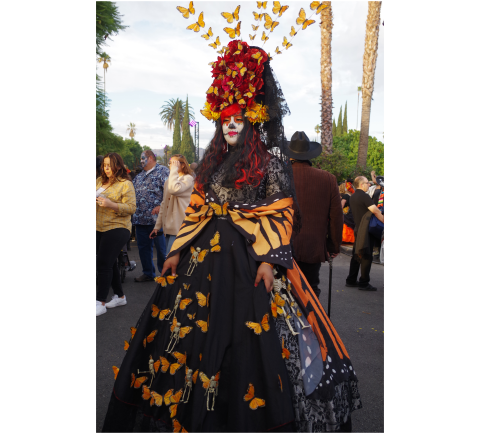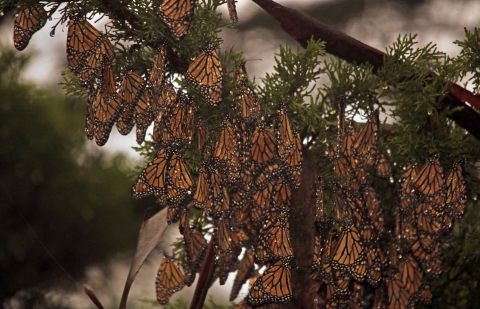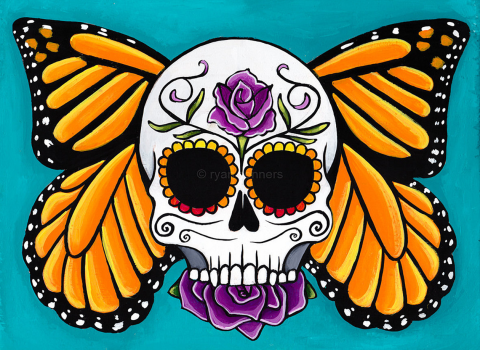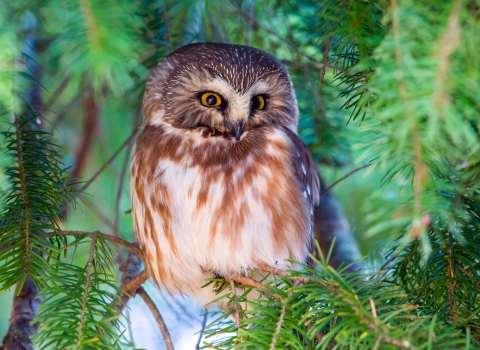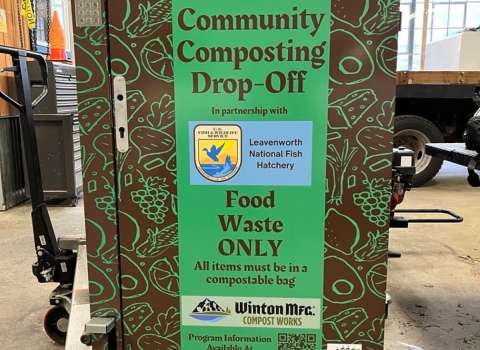When someone says “butterfly,” what’s the first word that comes to mind?
For me, it’s monarchs. Monarchs are famous – widely admired for their marathon journeys and flashy wings. When I see this iconic butterfly, it feels like a celebrity sighting. Americans rank butterflies as a top favorite animal, second only to dogs. And what butterfly do you see most often in ads and social media? Monarchs. With its bright orange wings surrounded by a black border and covered with black veins, the monarch butterfly has a double row of white spots, present on the upper side and lower side of forewings and hindwings.
What makes monarchs so special? They fly long distances to make a two-way migration, like birds. During the summer, they live everywhere milkweed grows in North America, so that covers most of the U.S. and parts of Canada and Mexico. They reproduce in areas where their caterpillar children can eat milkweed leaves to their hearts content until they grow up to be butterflies. In the fall, monarch butterflies in eastern North America travel up to 3,000 miles to reach Mexico.
Some people count on the arrival each migration season of monarchs to mark time, and monarchs are an important part of certain cultures.
Fall brings so many monarch butterflies to central Mexico that you can hear the sound of their wings. Their arrival coincides with the Day of the Dead, with the monarchs revered as the souls of ancestors returning to visit.
Is Monarch Migration Changing?
Researchers are now noticing migratory changes in the eastern monarch population. Changes in the number of butterflies in Mexico have been observed for decades. According to the 2023 annual survey (conducted by The National Commission of Protected Natural Areas in Mexico, the World Wildlife Fund Mexico and the World Wildlife Fund TELMEX Telcel Foundation Alliance), the eastern population of overwintering monarch butterflies was 50 percent lower than the previous year. This follows a decades-long decline in the population as a whole.
Changes in the timing of migration have occurred, too. More recently, changes in the behavior of monarchs during the winter have been evident, especially in the Southeast. While most eastern monarchs still migrate to Mexico, scientists see some monarchs remain in the Southern U.S. for the winter. Some live in southern Florida year-round. Others remain in warmer or coastal pockets of the Southeast. Researchers are unsure why these monarchs don’t migrate to Mexico, and much remains unexplored about what these changes in behavior might mean for the species.
Implications of Losing Monarch Migration
Changes in this eastern migration could have serious conservation impacts for ecosystem and monarch health. In the past, scientists have found that non-migratory monarchs have higher rates of infection with a butterfly parasite called Ophryocystis elektroscirrha (OE). The parasite infects monarchs, causing stunted wing size and shorter lifespans. In some cases, it causes failure to develop from caterpillars into butterflies. OE also affects monarchs’ ability to move.
How You Can Help
Report monarch sightings in the Southeast: Researchers rely on citizen scientists to get information. To help researchers understand monarchs in the Southeast, report your monarch sightings on a website called Journey North. We need citizens to help understand the changes and questions about monarchs. We especially want to hear if you see monarchs during the winter! Need help with monarch ID? Learn how to identify monarch butterflies in this 30 second video.
Only plant native milkweed: Monarchs only lay eggs on milkweed. They need native milkweed because native species bloom times coincide with monarch migration patterns. It cues monarchs into when to arrive and when to depart an area on their long migration. Tropical milkweed is not native and does not benefit monarch butterflies. Native milkweeds in the Southeast include butterfly milkweed, whorled milkweed, swamp milkweed, and other species. Monarchs and pollinators also need native flowers for nectar sources.
Keep monarchs wild: Rearing monarchs in captivity may spread parasites like OE. It can also interfere with their ability to migrate, which the species needs to stay resilient and healthy.

